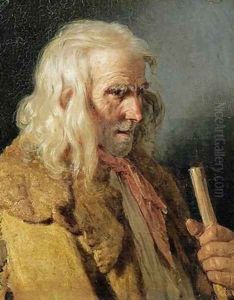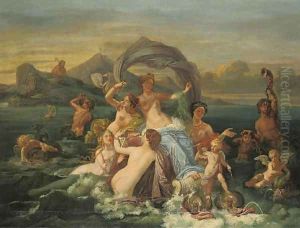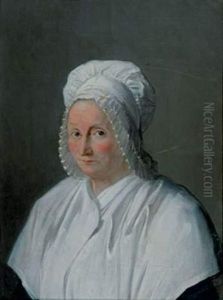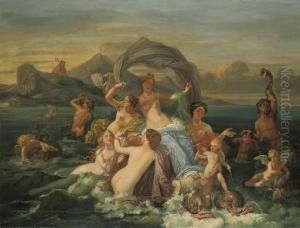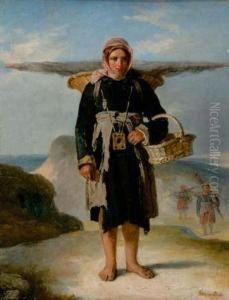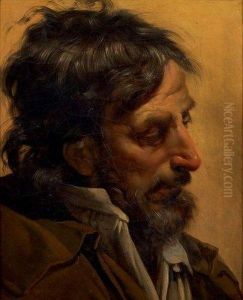Jean-Jacques Francois Monanteuil Paintings
Jean-Jacques François Lebarbier, also known as Jean-Jacques-François Monanteuil, was a French painter and lithographer. Born on April 20, 1785, in Paris, France, he developed a career during a period of significant transition in French art, moving from the neoclassical traditions of the late 18th century toward the Romantic movement that gained prominence in the early 19th century.
Monanteuil received his initial training under the neoclassical painter Jacques-Louis David, who was a dominant figure in French art and whose influence was widespread. Under David's tutelage, Monanteuil would have been steeped in the principles of clarity, order, and balance, honing his skills in the depiction of historical and mythological subjects.
Despite his academic training, Monanteuil's work also demonstrates an affinity with the Romantic movement, which emphasized emotion, individualism, and the sublime in nature. This is reflected in his landscapes and historical paintings, which often conveyed a sense of drama and emotional intensity.
Throughout his career, Monanteuil exhibited his works at the Salon, the official art exhibition of the Académie des Beaux-Arts in Paris. His paintings and lithographs were well received, and he garnered respect among his contemporaries. However, compared to the towering figures of the era like Eugène Delacroix or Théodore Géricault, Monanteuil's fame was more modest, and today he is less well-known than these artists.
Jean-Jacques François Monanteuil passed away on November 2, 1867. While not as widely recognized as some of his peers, his contributions to the French art of the period provide an interesting study in the transition between neoclassicism and Romanticism. His works remain a testament to the richness and diversity of French painting during a period of profound artistic evolution.
